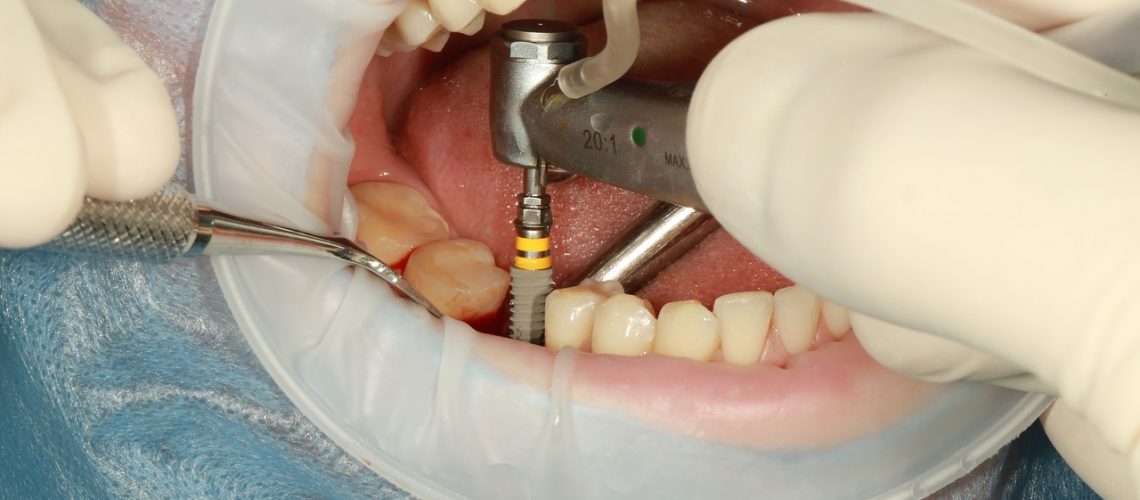Getting The Dental Sense To Work
Getting The Dental Sense To Work
Blog Article
Get This Report about Dental Sense
Table of ContentsNot known Facts About Dental SenseFacts About Dental Sense RevealedFascination About Dental Sense5 Easy Facts About Dental Sense Shown
are clinical devices operatively implanted right into the jaw to bring back an individual's capacity to eat or their look. They provide assistance for artificial (phony) teeth, such as crowns, bridges, or dentures. When a tooth is shed because of injury or condition, an individual can experience problems such as quick bone loss, defective speech, or changes to chewing patterns that result in pain.Oral dental implant systems contain an oral implant body and dental implant joint and may additionally consist of an abutment addiction screw. Wisdom tooth cavity. The oral implant body is operatively placed in the jawbone in location of the tooth's root. The dental implant joint is generally affixed to the implant body by the abutment addiction screw and prolongs via gums into the mouth to sustain the connected artificial teeth
(https://www.easel.ly/browserEasel/14548839)Structure of The Oral Implant System choosing oral implants, speak with your oral provider concerning the prospective advantages and risks, and whether you are a candidate for the treatment. Things to think about: Your overall health is a crucial consider establishing whether you are a great prospect for oral implants, how much time it will require to recover, and how much time the implant may remain in place.
Smoking might impact the recovery procedure and reduce the long-term success of the implant. The healing procedure for the dental implant body might take numerous months or longer, throughout which time you generally have a momentary abutment instead of the tooth. the oral implant treatment: Meticulously follow the oral health guidelines provided to you by your dental provider.
6 Easy Facts About Dental Sense Described
Implant failure can cause the need for one more procedure to take care of or replace the dental implant system. Recovers the capacity to chew Restores aesthetic look Assists keep the jawbone from reducing as a result of bone loss Maintains the health of the bordering bone and gums Helps maintain surrounding (nearby) teeth stable Enhances top quality of life Damage to surrounding natural teeth throughout implant positioning Injury to the surrounding tissues throughout surgical treatment, such as sinus opening Injury during surgery (for instance, fracture of surrounding jawbone) Inadequate function, such as really feeling like the teeth do not bite together normally A sensation that the tooth hangs or turning in position arising from an abutment screw loosening up Implant body failure (looseness of the dental implant body) due to systemic infection, which may be more probable in people with uncontrolled diabetics issues because of neighborhood infection in bone and periodontals sustaining the implant body as a result of delayed healing, which may be more most likely in clients that smoke Trouble cleansing the gums helpful resources around the dental implant, resulting in poor dental hygiene Untreated periodontal disease Post-surgical feeling numb as a result of nerve impingement or damage Constantly alert healthcare companies and imaging specialists that you have dental implants before any type of magnetic resonance imaging (MRI) or x-ray procedures.
FDA is not knowledgeable about any negative occasions reported for MRI or x-ray treatments with oral implants. Dental implants systems are typically made from products that comply with global consensus standards of the International Company for Standardization (ISO) or ASTM International. These requirements have details of what makes a secure material.

An oral implant is a framework that replaces a missing tooth. With screw-like devices, the specialist inserts an implant right into the jawbone, and it acts as a support for an artificial tooth, called a crown. A device called a joint connects the synthetic tooth to the dental implant. The crown is custom-made to fit the individual's mouth and match the color of their teeth.
A Biased View of Dental Sense
Some people are not eligible for dental implant surgery. It is for oral surgeons to operate individuals with: severe illnessuncontrollable metabolic diseasebone or soft tissue condition or infectionIf these problems are resolved, an individual can have the surgical procedure. In, oral surgeons avoid from operating people with: If people with any one of the above undertake oral implant surgical treatment, there is a greater risk of the dental implant stopping working.

Oral dental implant surgical treatment is an individualized procedure. It's not the very same for everyone. However the following offers a basic introduction of what you can expect your dental expert, dental surgeon, periodontist or prosthodontist to do: Position the implant surgically. Offer you time to heal. Connect the message and last crown, bridge or denture.
Next off, your specialist will carefully position the oral implant right into your jaw. If your implant is near the front of your mouth, your dental practitioner will certainly make a momentary tooth for you to use till you heal.
The smart Trick of Dental Sense That Nobody is Discussing
Your copyright can tell you what to expect in your circumstance. Throughout the healing stage, your jawbone ought to fuse to the oral implant. This process, called osseointegration, is critical for security and lasting success. This procedure can take anywhere from 3 to nine months. In many cases, it might take longer.
Once your implant heals, your dentist can affix the abutment (small connector message) and your final reconstruction (crown, bridge or denture). This generally takes concerning one hour to finish and may call for a second minor surgical procedure. You shouldn't really feel any pain during your dental implant procedure since your company will use medicine to numb your gum tissues.
Report this page